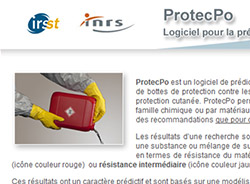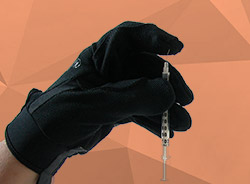Work gloves? There are gloves for every need: beekeepers, firefighters, material handlers, and welders, to name but a few.
However, there is no such thing as one glove that is perfect for all types of jobs. This is why it’s so important that you choose the right type for your activities. What type of protection are you looking for? Protection against chemical, biological, electrical or thermal hazards? Or protection against mechanical hazards such as cuts and punctures? Be sure to choose protective equipment that has undergone performance tests recognized by international organizations (e.g. ASTM, ISO or EN) for the hazards that concern you.
ProtecPo: Pre-selection of protective materials

ProtecPo is software for predicting the resistance of polymeric materials used in the manufacture of chemical-resistant protective gloves, clothing and boots. It was designed to help users select skin protective materials. ProtecPo allows different types of searches: by chemical substance, alone or in a mixture, by chemical family or by polymeric material (Butyl, Viton®, Latex (or natural rubber), Neoprene® and Nitrile). ProtecPo gives recommendations only for these 5 materials.
Needlestick injury protection

Needlestick injury is a hazard faced by a growing number of workers. In addition to other hazard-reduction strategies, including engineering technology initiatives and administrative measures, protective clothing, especially needlestick-resistant gloves, must be made available to these workers.
This study developed a method of measuring the needlestick resistance of protective glove materials. Four types of structured materials were found to be more needlestick resistant than others.
There are relatively few models of needlestick-resistant gloves on the market, the choice is very limited. This document proposes an exploratory evaluation of manual dexterity, tactile sensitivity and comfort when needlestick-resistant gloves are worn on the job.